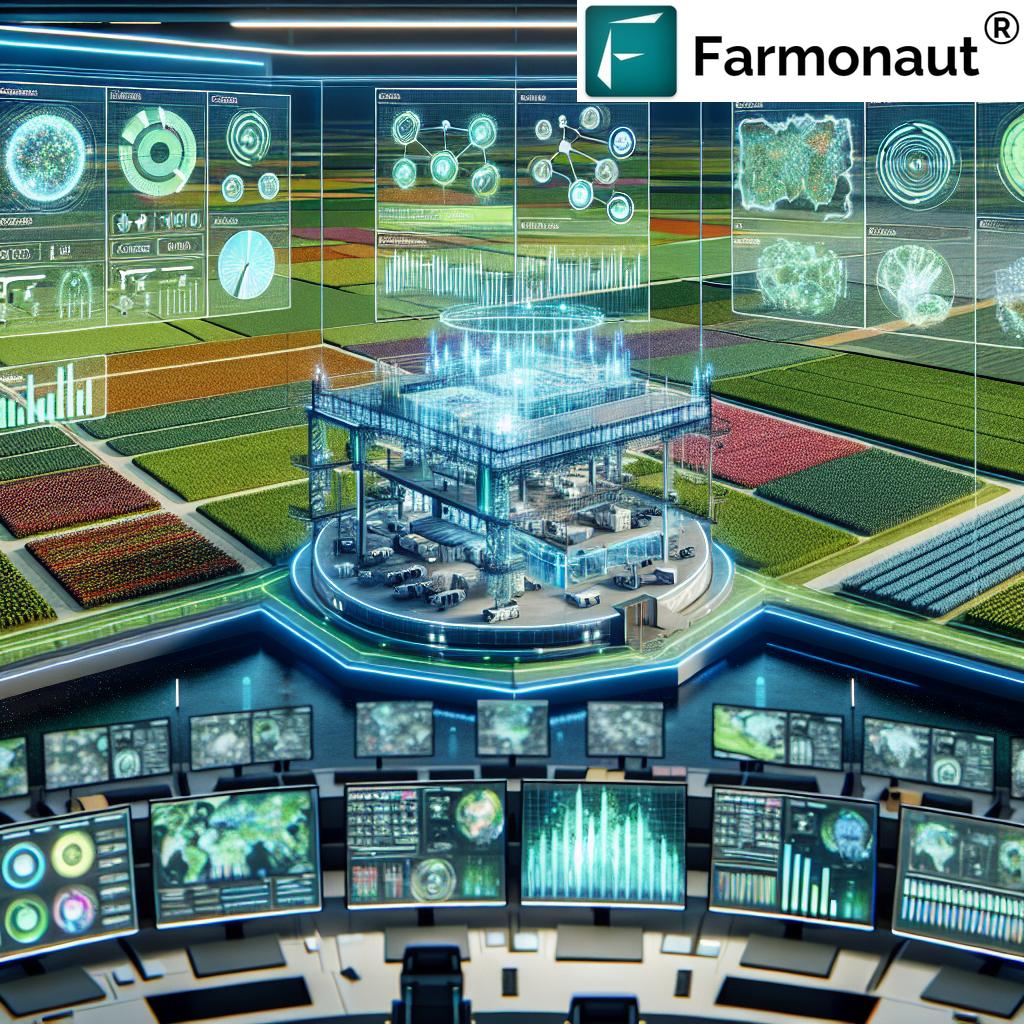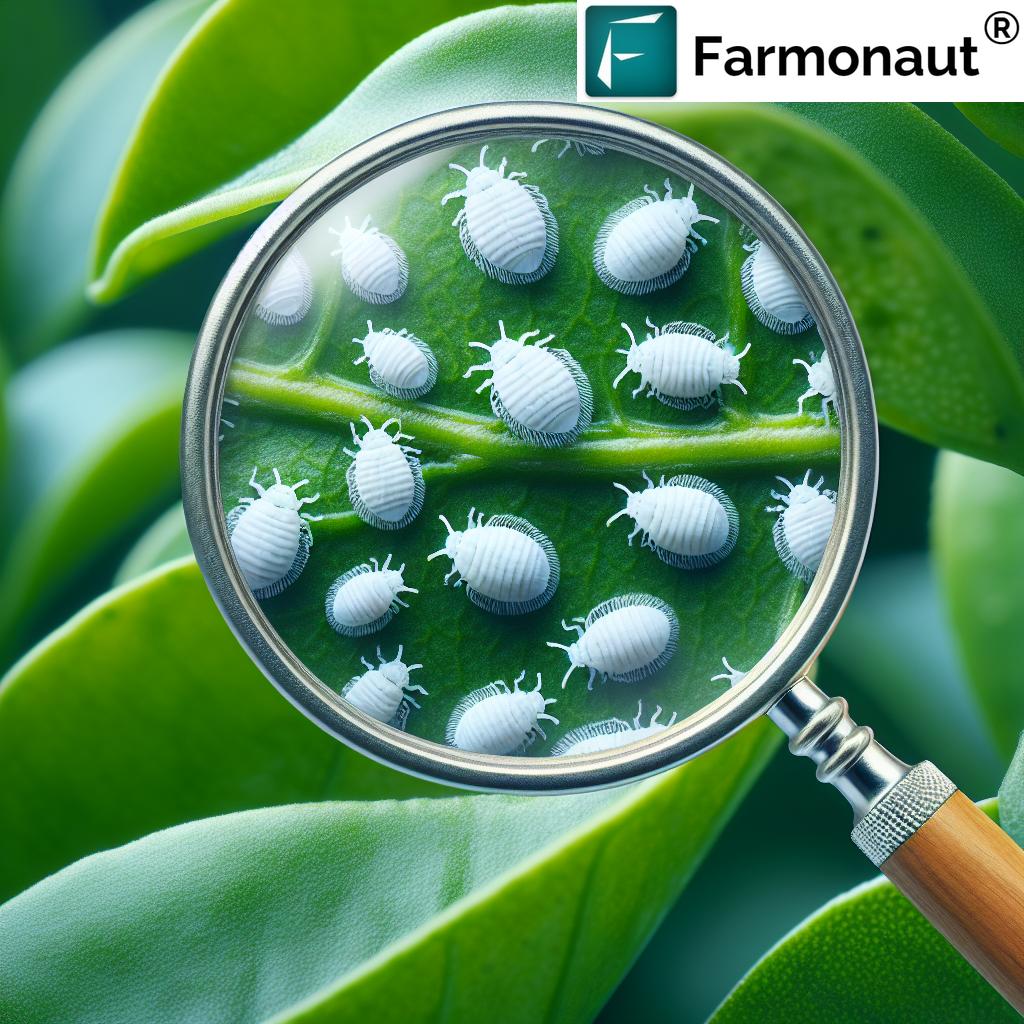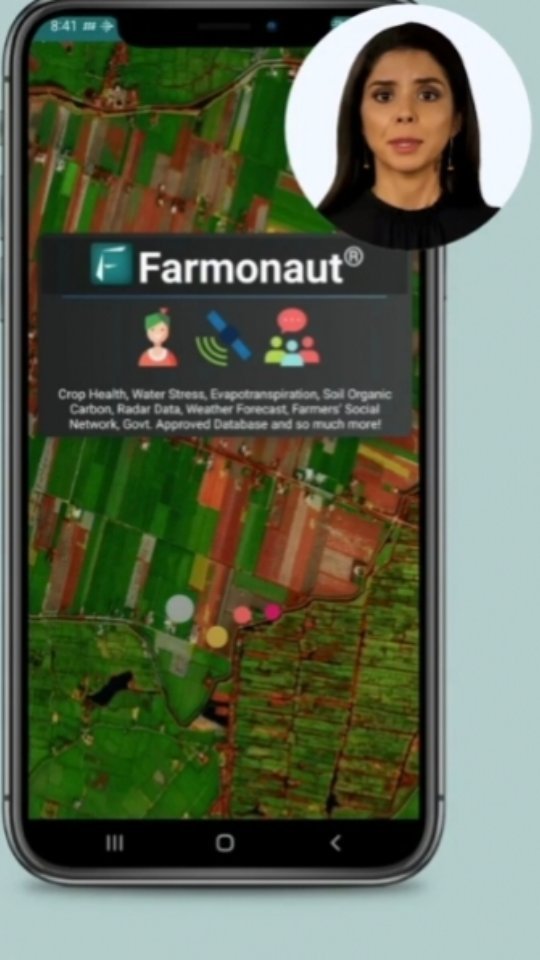Crop Planning and Management: Unlock 7 Secret Strategies!
“Farmers using integrated pest management can reduce pesticide use by up to 50% while maintaining crop yields.”
Introduction: The Power of Crop Planning and Management for Sustainable Agriculture
In today’s rapidly evolving agricultural landscape, crop planning and management have emerged as fundamental pillars of sustainable agriculture practices. As we collectively strive to feed a growing population while safeguarding our environment, it’s more crucial than ever to employ effective, data-driven strategies that balance productivity with environmental stewardship.
Our journey into comprehensive crop planning and management will reveal seven secret strategies that can significantly improve crop yields, reduce risks and resource wastage, and reinforce the health of both our soils and ecosystems.
We’ll integrate both traditional wisdom and modern technologies—leveraging advances in precision agriculture technology and sustainable farming systems. Each strategy is designed to fit the needs of all growers, from individual farmers to large agrobusinesses, helping us make more effective decisions, adapt to changing conditions, and foster a resilient and profitable agricultural sector.
Strategy 1: Crop Selection and Rotation for Optimal Productivity
Crop selection lies at the core of effective crop planning and management. We must tailor our crop choices to the local climate, soil conditions, and current market demand. This approach enables us to diversify our crops, helping to mitigate risks related to market fluctuations and environmental challenges.
- Diversifying Crop Choices: Limits vulnerability to specific diseases or market price drops.
- Crop Rotation Strategies: The practice of alternating different crops (for example, rotating legumes with cereals) in the same field across seasons disrupts pest and disease cycles and prevents soil depletion.
- Enhanced Soil Health: Certain crops (like legumes) add nitrogen to the soil, improving fertility for subsequent crops and promoting a healthier ecosystem.
- Structural Benefits: Crop rotation improves soil structure and organic matter, making soils more resilient and productive.
For example, in regions where maize and wheat dominate, incorporating pulses in a rotation interrupts the life cycles of common soil-borne pests and helps restore the soil.
Learn more about crop rotation strategies and pest prevention
Strategy 2: Effective Soil Fertility Management
Soil fertility management is critical in sustaining high yields and maintaining soil health for the long term. By nurturing soils with organic and sustainable practices rather than relying solely on synthetic inputs, we promote a more productive and resilient ecosystem.
Key Soil Management Practices for Sustainability
- Organic Matter Incorporation: Adding compost, well-rotted manure or green manure enhances soil nutrient content and microbial activity.
- Cover Cropping: Growing cover crops during off-season periods protects soils from erosion, suppresses weeds, and contributes to nutrient cycling.
- Crop Residue Management: Leaving or returning residues helps retain soil moisture and maintain its structure.
- Soil Testing and Data Collection: Periodic testing allows for targeted nutrient applications, enabling us to optimize resource allocation and reduce chemical usage.
These soil health practices not only replenish nutrients but also make agricultural systems more resilient to weather and disease. Managing soil fertility with precision is a cornerstone of sustainable agriculture.
“Precision agriculture techniques can increase crop yields by 20% and reduce fertilizer runoff by 30%.”
Strategy 3: Integrated Pest Management (IPM)
Integrated pest management (IPM) is a comprehensive approach to controlling pests and diseases in a manner that’s both economically viable and environmentally sound. We combine multiple methods to target pests at various stages of their life cycles, reducing reliance on chemicals and maintaining crop health.
Key Elements of IPM
- Biological Controls: Leveraging natural enemies of pests—such as predatory insects or beneficial microbes—keeps populations in check without need for synthetic chemicals.
- Cultural and Physical Methods: Practices like crop rotation, optimal planting schedules, and mechanical removal of pests disrupt their cycles and lower infestation risks.
- Responsible Chemical Use: Applying pesticides only when absolutely necessary, and in targeted ways, reduces risk of resistance and minimizes impact on human health and the environment.
- Data Monitoring: Regular scouting and data collection help us make informed decisions about control measures, timing, and strategy integration.
Implementing IPM not only controls pests and diseases efficiently but also boosts the resilience and sustainability of our fields.
Discover detailed IPM strategies and their scientific benefits
Strategy 4: Precision Agriculture Technology & Data-Driven Decisions
Precision agriculture technology has transformed crop planning and management, making agriculture more data-driven, efficient, and sustainable. Advanced technologies like GPS, satellite imagery, farm management software, and sensor networks allow us to monitor, analyze, and optimize every aspect of crop growth and management.
Precision Tools for Smarter Farms
- Yield Mapping & GPS Integration: Systematic analysis of yield, soil moisture, and field variability enables farmers to apply water, fertilizer, and crop protection where they’re needed most.
- Satellite Crop Health Monitoring: Leveraging platforms like Farmonaut, we receive real-time NDVI imagery, soil moisture data, and pest alerts for managing fields at scale.
- Farm Management Software: Centralizes critical data, optimizes resource allocation, plans crop rotations, and integrates weather forecasts for proactive planning. Discover more about farm management software for crop planning.
- Data-Driven Insights: Real-time mobile and web dashboard access improves responsiveness and decision-making.
- Automated Advisory Systems: AI-powered advisories, such as Farmonaut’s Jeevn AI Advisory System, provide customized crop management recommendations.
The integration of precision agriculture technology not only enhances yields but also reduces chemical usage and optimizes key farming inputs, ushering in an era of sustainable, profitable farming.
Read about yield mapping and precision agriculture techniques
For those looking to seamlessly digitize farm operations, Farmonaut’s large scale farm management platform offers integrated satellite monitoring, resource tracking, and operational management—with flexible subscriptions for all sizes of operations (see pricing below).
Strategy 5: Intercropping Benefits and Biodiversity Enhancement
Intercropping—the practice of cultivating two or more crops together in the same field—offers multiple advantages for sustainable agriculture. By increasing biodiversity and promoting synergistic crop relationships, we can boost yields and further reduce pest and disease cycles.
Key Intercropping Strategies
- Complementary Nutrient Use: Pairing deep-rooted and shallow-rooted crops maximizes nutrient cycling and field efficiency.
- Natural Pest Control: Certain plant combinations naturally deter pests or disrupt their life cycles, reducing the need for chemical applications.
- Multiple Harvests: Growing fast- and slow-maturing crops together spreads risks and enhances market opportunities.
- Soil Health and Structure: Different root systems improve soil structure and organic matter content over time.
For example, intercropping maize with legumes like cowpea can improve overall field productivity due to their complementary growth habits and abilities to fix nitrogen.
Explore scientific insights into intercropping and biodiversity
Strategy 6: Climate Adaptation in Farming & Risk Management
Modern agriculture must adapt to changing climate conditions to ensure sustained productivity. Climate adaptation in farming involves proactive choices at every stage of crop planning and management, reducing the risks associated with unpredictable weather.
Key Approaches to Climate Risk Management
- Climate-Resilient Crop Varieties: Select and plant varieties suited to local weather patterns and stress conditions (e.g., drought, flood, salinity).
- Flexible Planting and Harvest Schedules: Adjust planting dates in response to weather trends and forecasts.
- Water Management Techniques: Implement conservation methods like mulching, drip irrigation, and rainwater harvesting.
- Weather Monitoring Systems: Leverage real-time data to inform timely decisions and react to climatic events.
- Farm Insurance for Climate Events: Use satellite-based crop loan and insurance to mitigate financial risks related to crop failure, enabled by Farmonaut’s accurate field verification.
By integrating data-driven insights with local knowledge, we can build more resilient farming systems that are prepared for the effects of climate change.
Read more about preventing pest and disease cycles in changing climates
Strategy 7: Sustainable Crop Management Practices & Environmental Stewardship
Sustainability must be the North Star guiding our agricultural planning and management. Responsible, environmentally-friendly practices increase long-term viability while protecting the health of soils, water, and biodiversity.
Major Sustainable Practices
- Reducing Chemical Inputs: Limit use of synthetic fertilizers and pesticides by integrating IPM, organic amendments, and precision application techniques.
- Water Conservation: Adopt technologies and field practices that lower water use and improve efficiency.
- Protecting Natural Habitats: Maintain buffer strips, shelterbelts, and uncultivated areas to enhance biodiversity.
- Agroforestry: Integrate trees and shrubs into crop systems to enrich soil fertility, provide shade, and establish alternative income streams.
- Carbon Footprinting: Proactively monitor your farm’s carbon footprint using satellite-based services to minimize environmental impact, comply with regulations, and access eco-friendly market opportunities.
- Supply Chain Transparency: Assure consumers of sustainability through blockchain-based product traceability, which boosts trust and demonstrates stewardship.
Implementing these practices is essential for the longevity of agricultural systems and our planet’s future.
Comparison Table of 7 Sustainable Crop Management Strategies
| Strategy Name | Description | Estimated Yield Improvement (%) | Environmental Benefit | Level of Sustainability | Implementation Complexity |
|---|---|---|---|---|---|
| Crop Selection & Rotation | Alternating crops in a field, based on climate, soil and market demand | 7–20% | Breaks disease cycles, increases soil fertility | High | Moderate |
| Soil Fertility Management | Incorporating organic matter, compost, and cover crops to enhance soil | 10–28% | Reduces chemical use by 30%, improves resilience | High | Moderate |
| Integrated Pest Management | Combining biological, cultural, physical & chemical tools to manage pests | 8–18% | Reduces pesticide use by up to 50% | High | Moderate |
| Precision Agriculture Technology | Use of GPS, satellite data, and analytics for site-specific management | 15–35% | Cuts fertilizer runoff by 30%; efficient input use | High | Moderate to Difficult |
| Intercropping & Biodiversity | Growing multiple crops together to maximize resource use | 12–24% | Improves soil structure, suppresses pests & weeds | High | Moderate |
| Climate Adaptation & Risk Management | Adapting crop choice and timing to weather and climate risks | 10–20% | Reduces crop loss, enhances resilience | High | Moderate |
| Sustainable Practices & Stewardship | Reducing chemicals, conserving water, promoting agroforestry | 8–15% | Improves biodiversity, reduces GHG emissions | High | Easy to Moderate |
Farmonaut Technologies for Sustainable Crop Planning and Management
As we advance into the era of intelligent agriculture, leveraging Farmonaut’s satellite-based solutions empowers us to optimize every step of crop planning and resource management. Here’s how Farmonaut’s platform supports each strategy outlined above:
- Crop Health Monitoring: Multispectral satellite imaging provides real-time NDVI, soil moisture, and stress data at a per-field level, enabling us to act on issues before they escalate.
- AI-Powered Insights: Personalized advisories through Jeevn AI analyze weather, soil, and crop data to propose optimized planting schedules and control tactics.
- Blockchain-Based Traceability: Enhance supply chain transparency and consumer trust in sustainable products via blockchain-powered traceability.
- Automated Fleet & Resource Management: Track and optimize equipment, vehicles, and input usage for reduced operational costs at any scale.
- Carbon Footprinting: Get accurate, satellite-based carbon emission reports to benchmark, prove, and improve your sustainability.
- APIs for Seamless Integration: Farmonaut’s API platform and developer documentation allow agritech businesses to integrate live crop, weather, and field data into custom apps and farm management systems.
Frequently Asked Questions (FAQ): Crop Planning and Management Secrets
-
What is crop planning and management?
It’s a strategic process where farmers decide which crops to plant, when to plant and harvest, how to manage resources, and how to respond to disease, pest, and climate risks to improve productivity and sustainability.
-
How does crop rotation benefit my farm?
Crop rotation strategies break pest and disease cycles, enhance soil fertility, structure, and reduce input costs while improving yields.
-
How does integrated pest management reduce pesticide use?
IPM combines biological, cultural, and physical pest control techniques, reducing reliance on chemical pesticides by up to 50%—lowering costs and protecting the environment.
-
What technologies does Farmonaut provide for precision agriculture?
Farmonaut offers real-time satellite crop monitoring, AI-powered advisory, blockchain traceability, carbon footprint tracking, and fleet/resource management for improved crop planning and management.
-
Why is soil fertility management vital?
Maintaining soil health with organic matter, compost, and cover crops sustains yields, improves structure, and supports resilient ecosystems.
-
How can I access Farmonaut’s technologies?
Use our web, Android, or iOS app for affordable, scalable precision crop management.
-
How does intercropping benefit the environment?
Intercropping increases field biodiversity, suppresses pests, improves nutrient cycling, sustains soil health, and diversifies income.
Conclusion: Towards Effective, Optimal, and Sustainable Crop Planning
Effective crop planning and management empower us to strike the vital balance between productivity and sustainability. By adopting integrated strategies—from crop selection, rotation, soil fertility management, IPM, and intercropping, to leveraging precision agriculture technology and adapting to a changing climate—we can improve yields, reduce risks, and protect our environments for future generations.
Innovations like Farmonaut’s satellite-driven insights, scalable tools, and ecosystem of support bring the future of sustainable agriculture into our hands. Whether we manage a single field or vast farming enterprises, embracing comprehensive crop planning will help us flourish amidst uncertainty and build a resilient, prosperous future.















